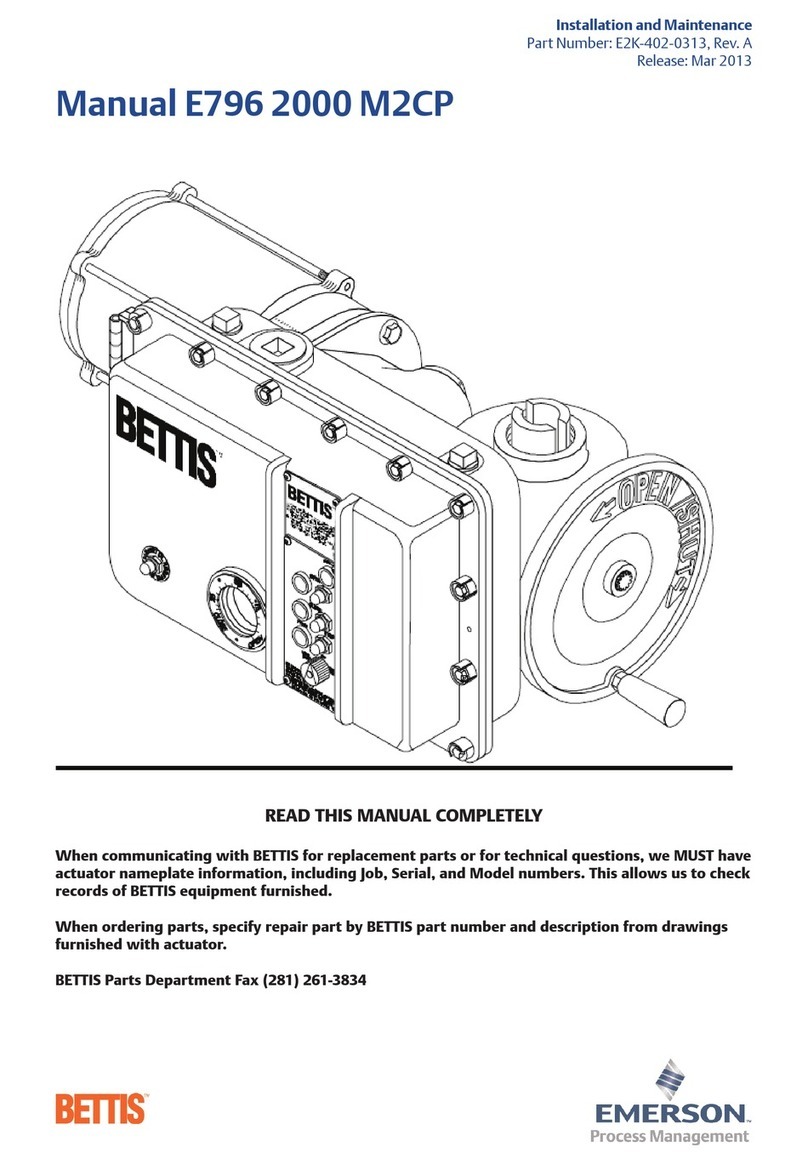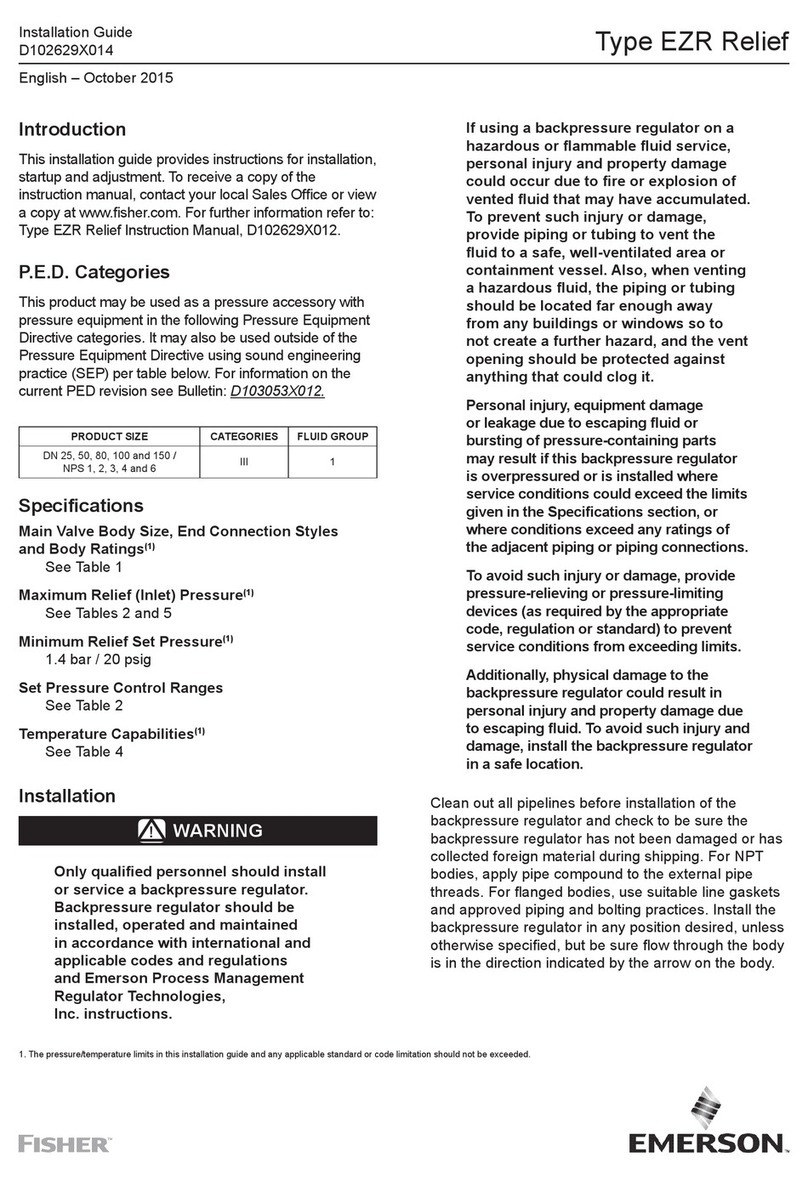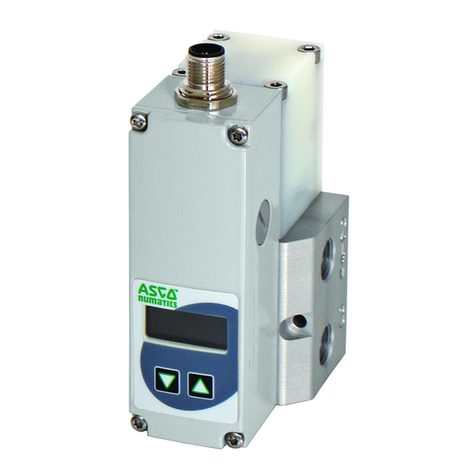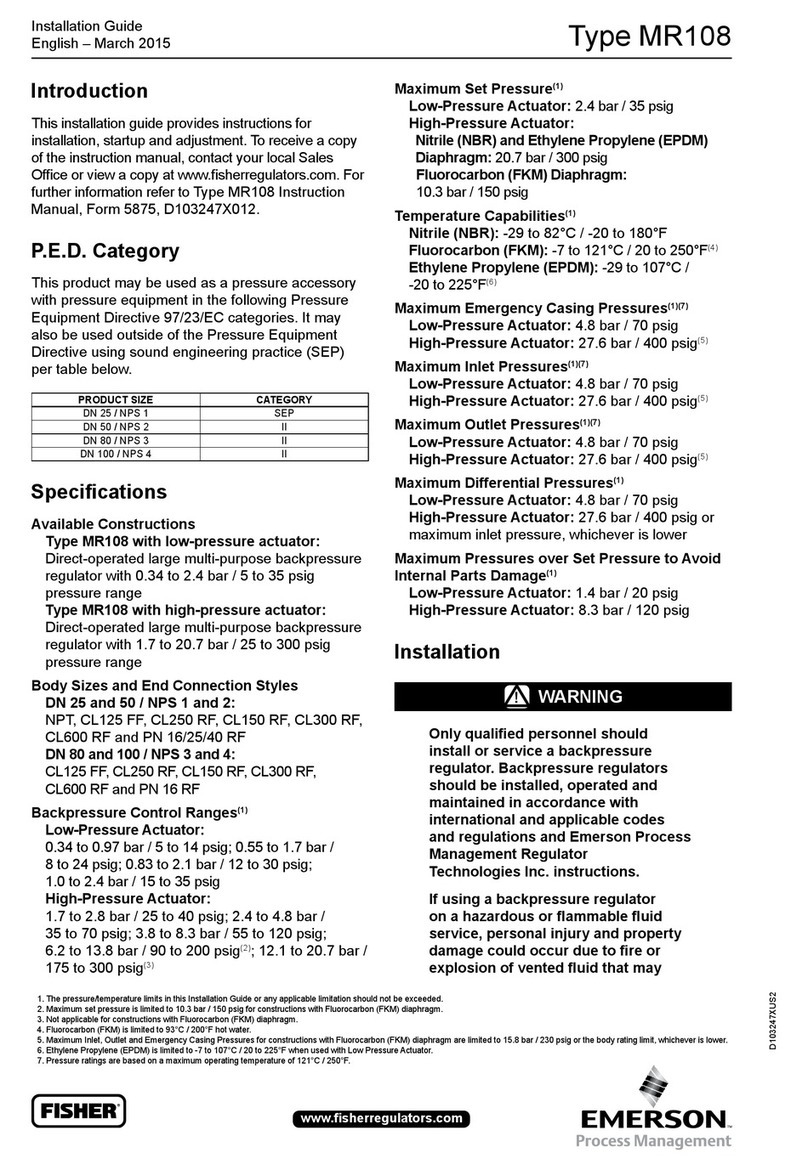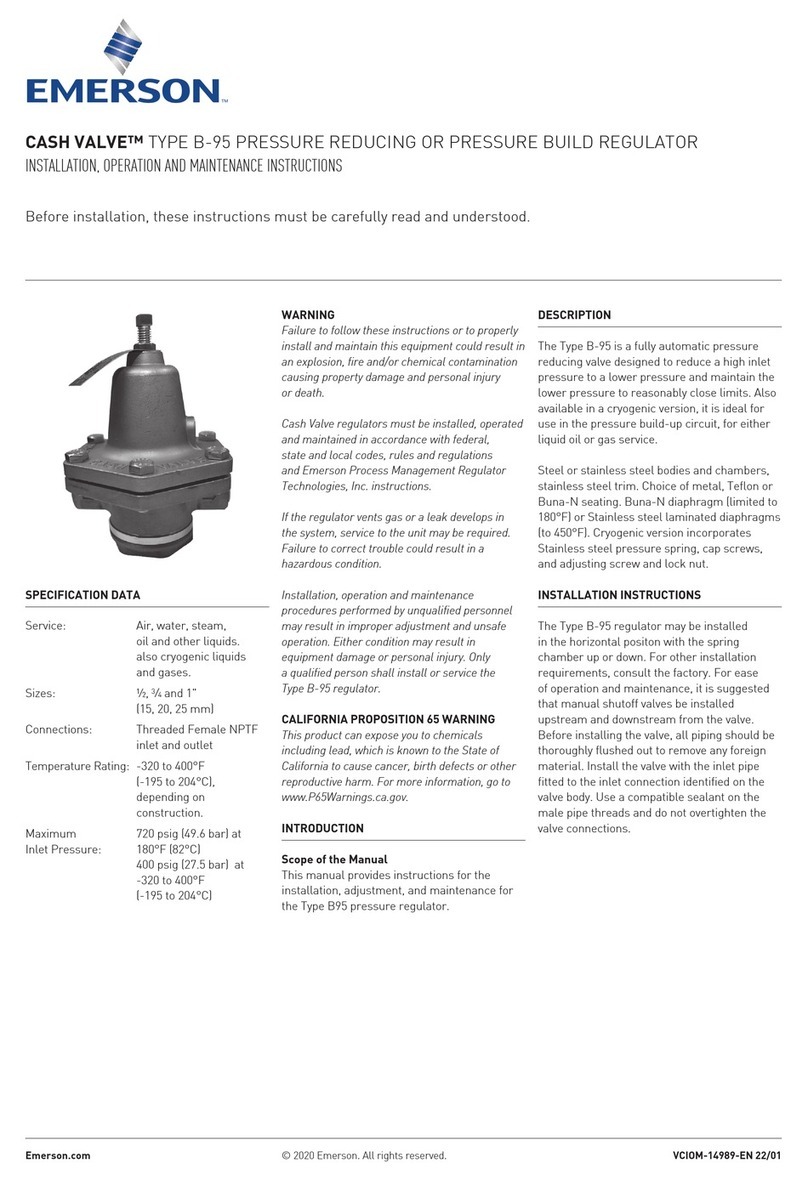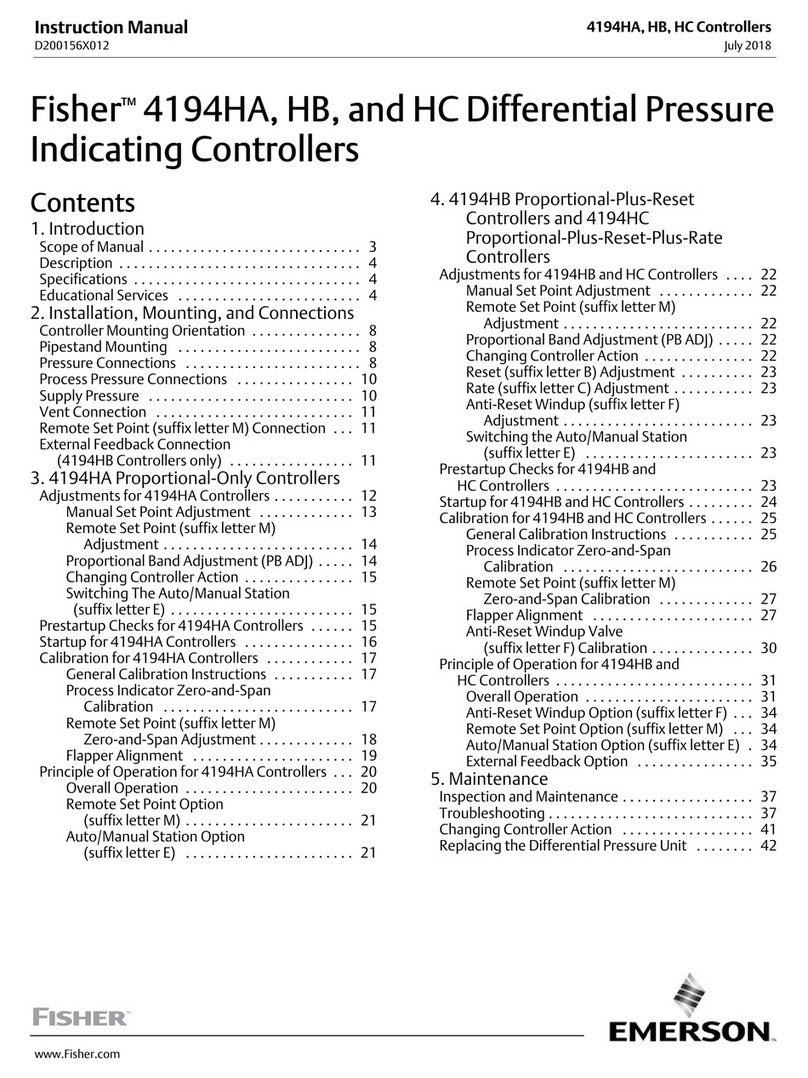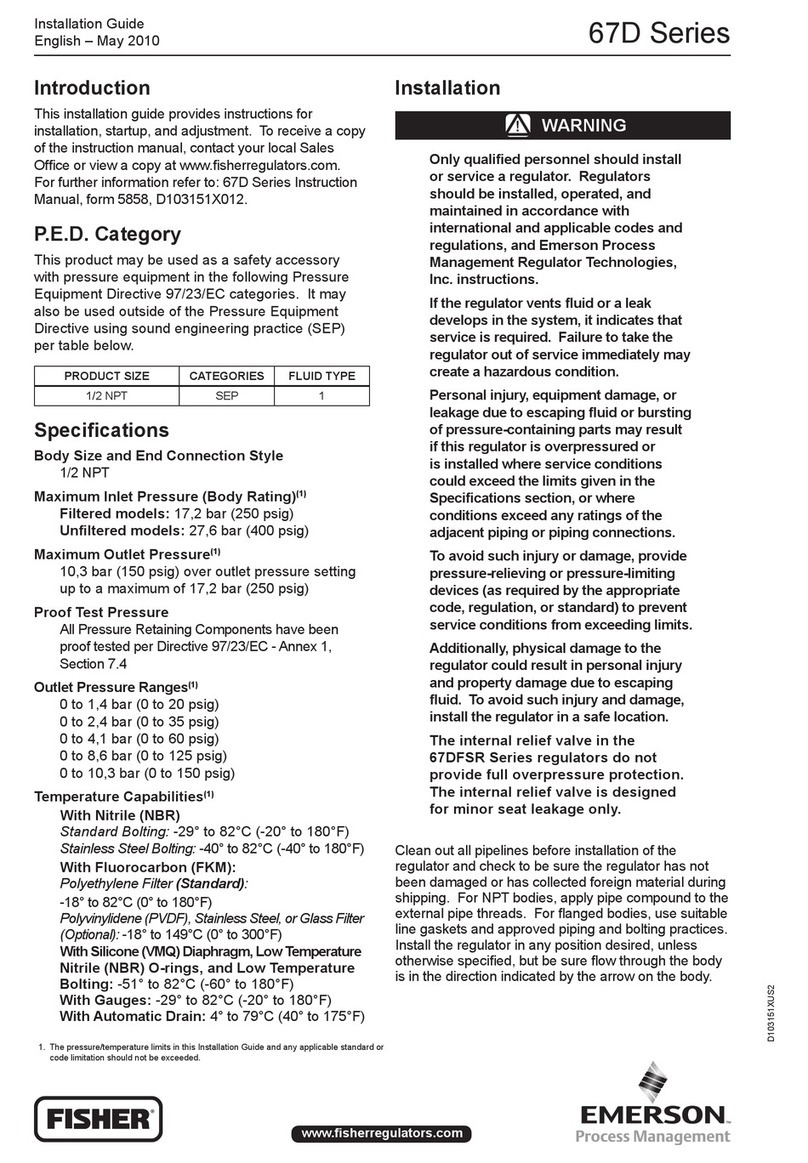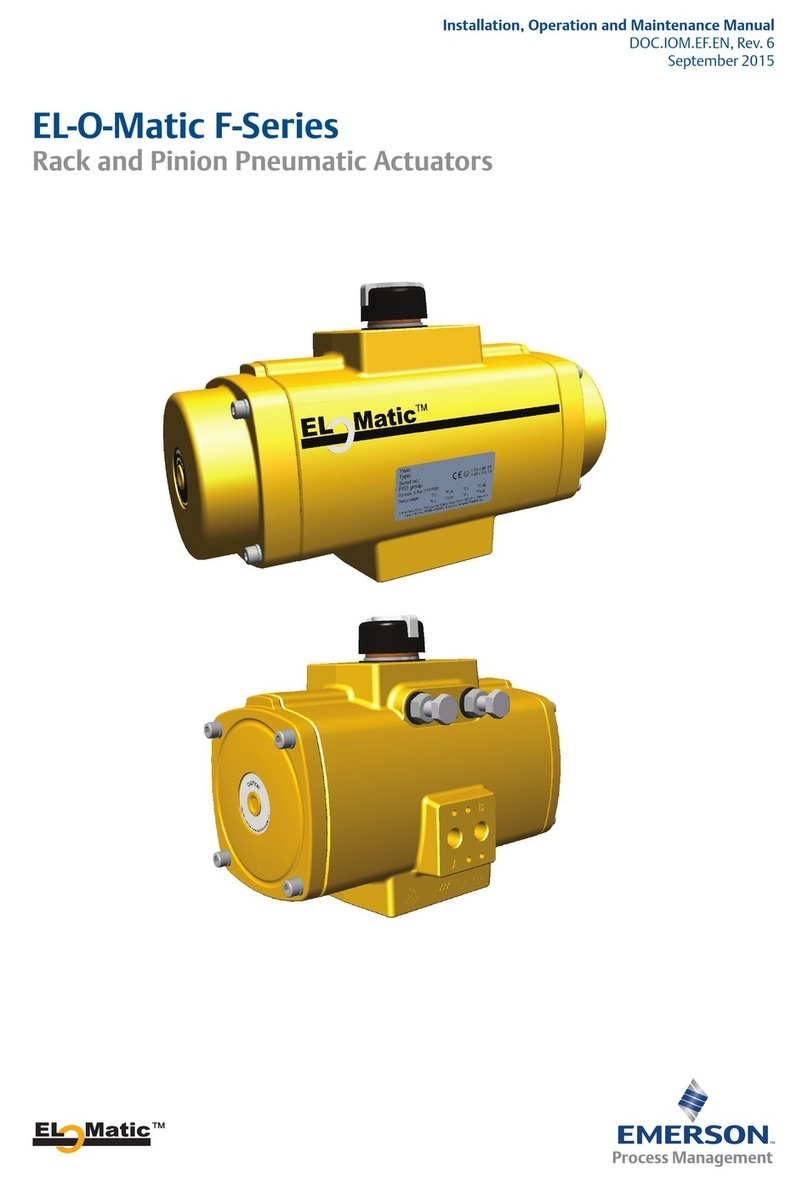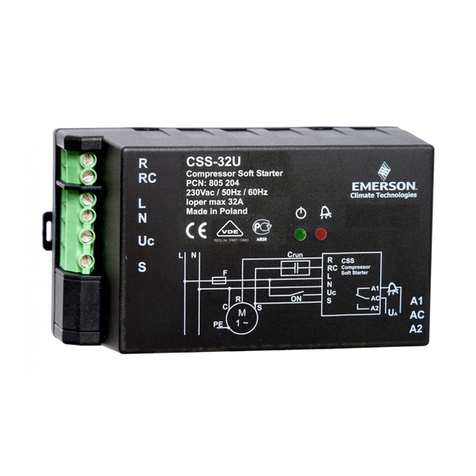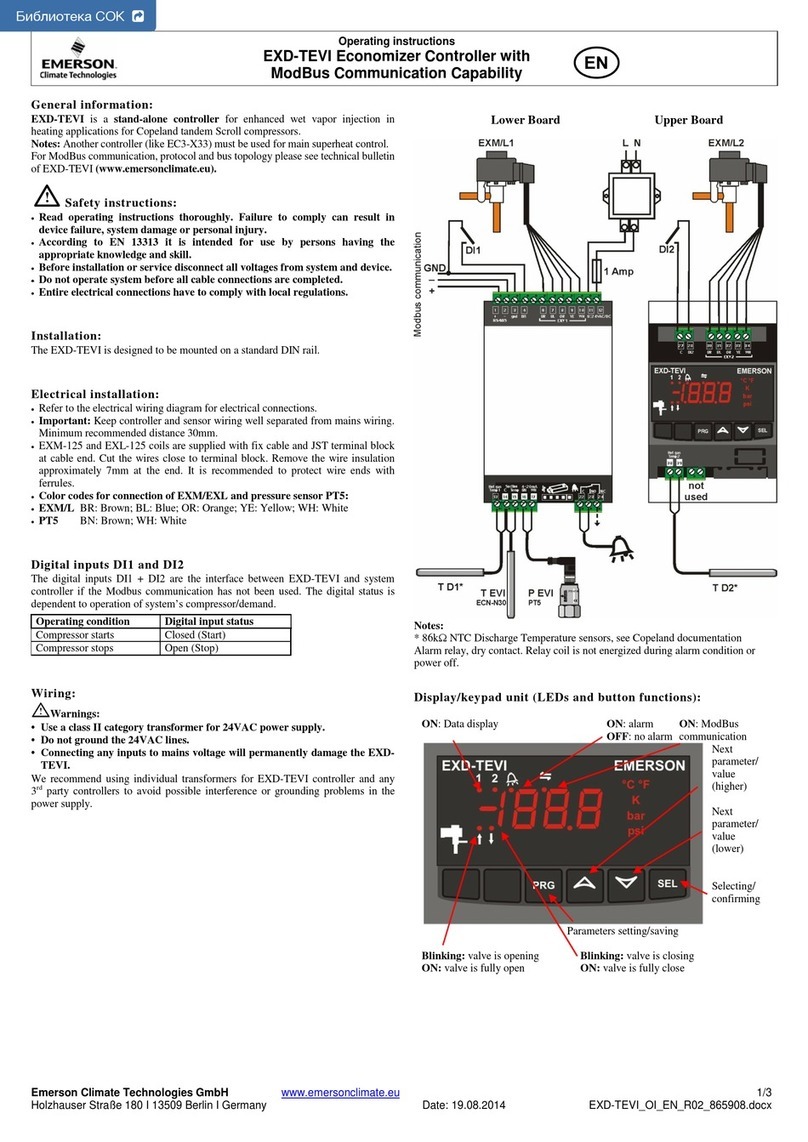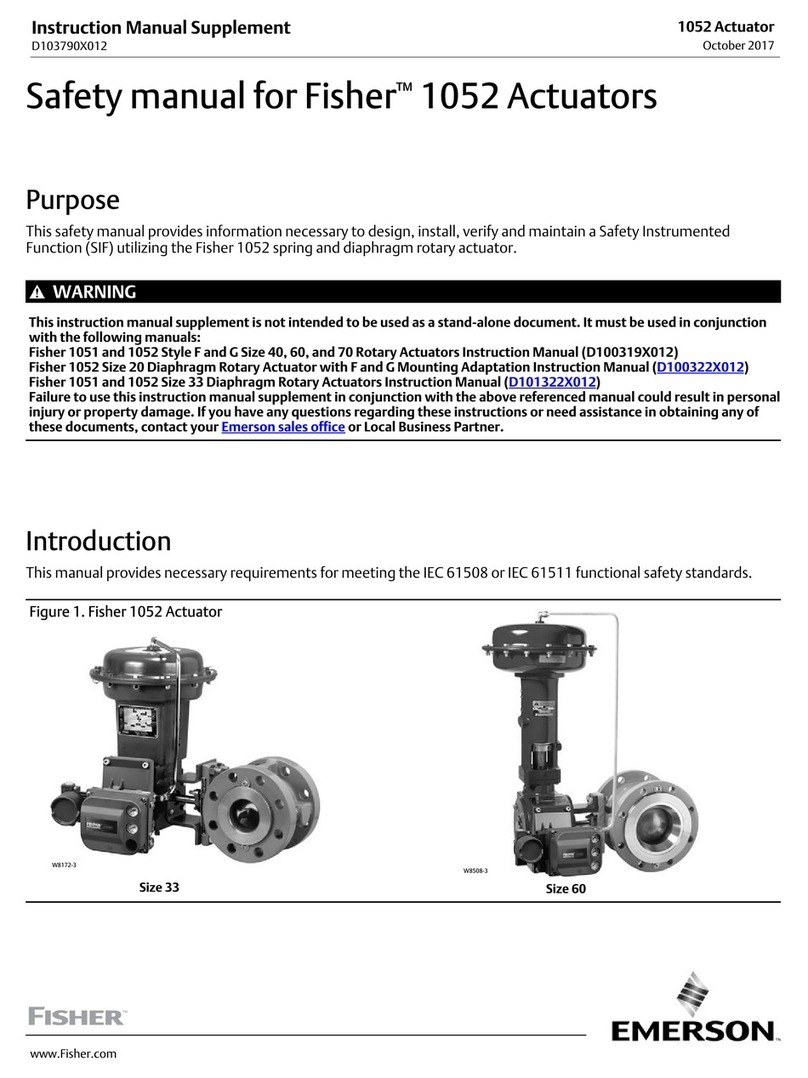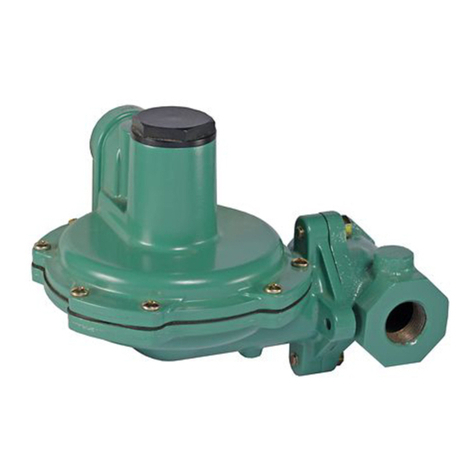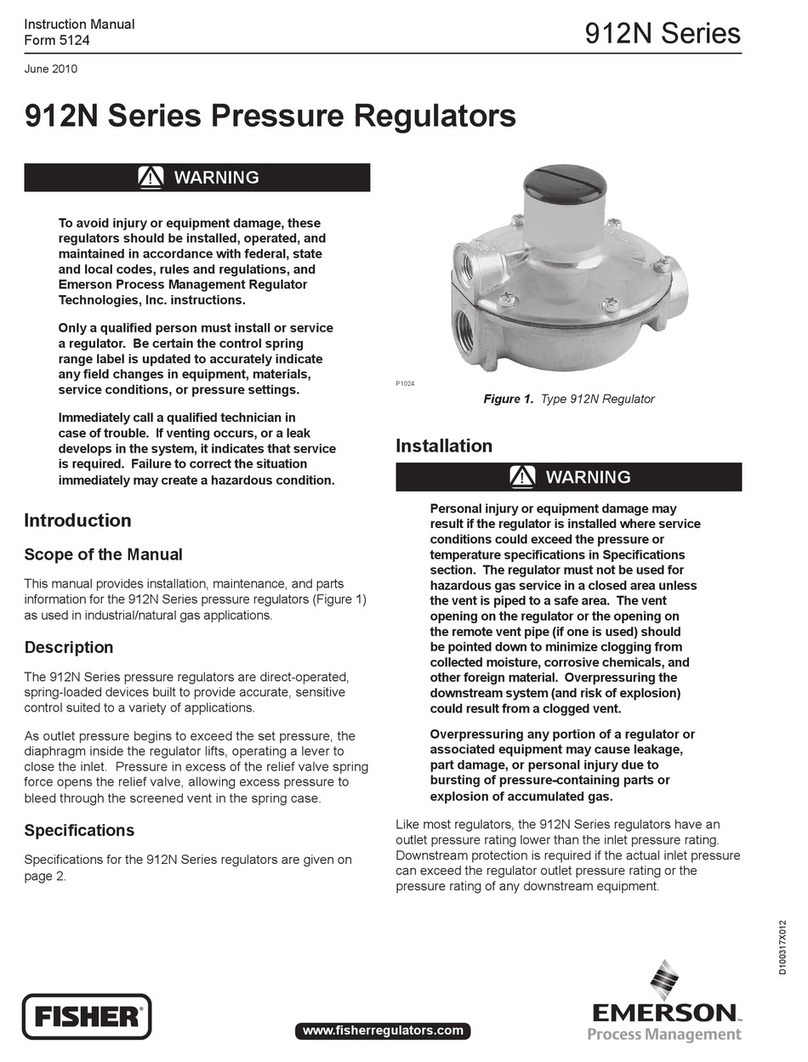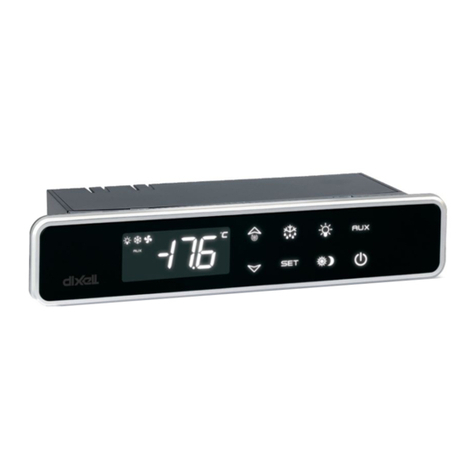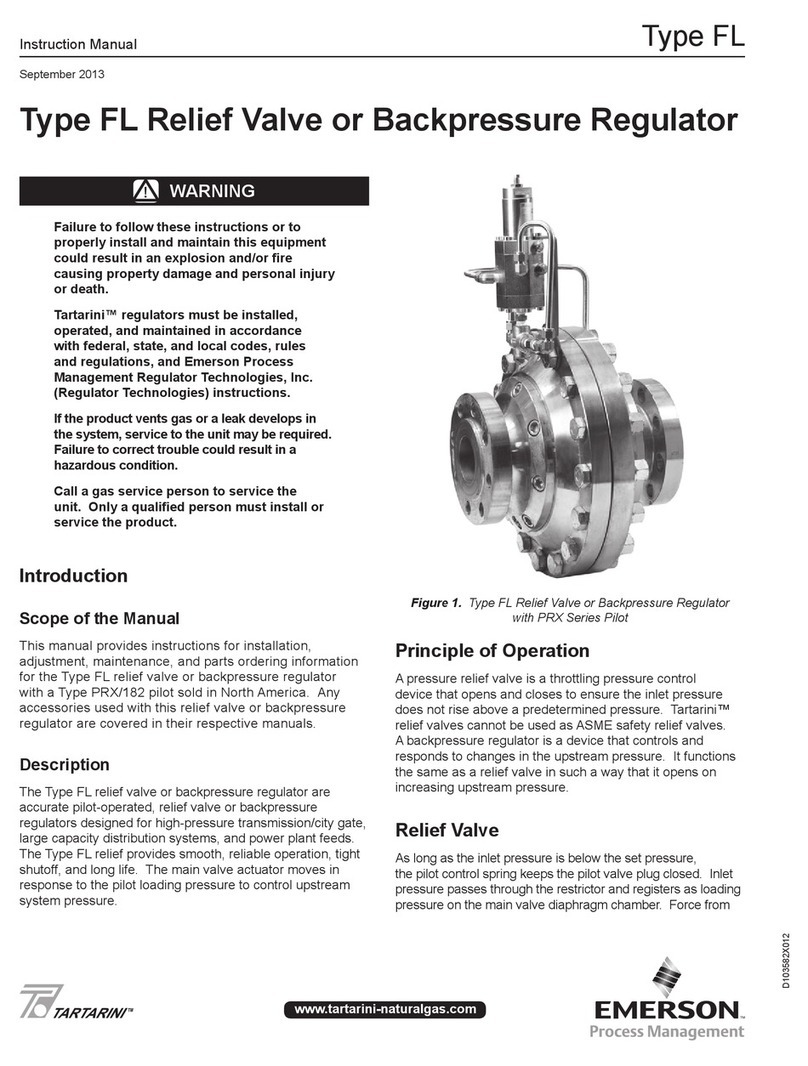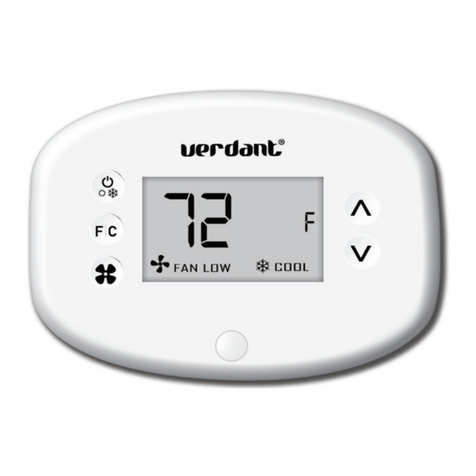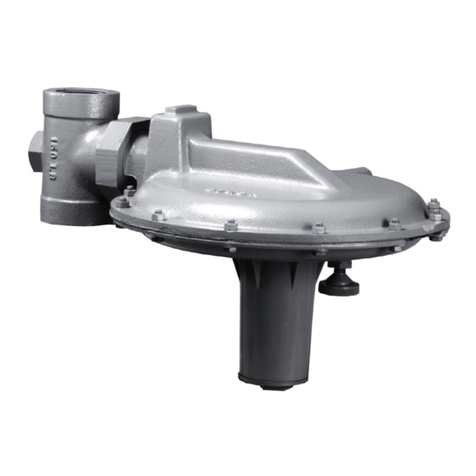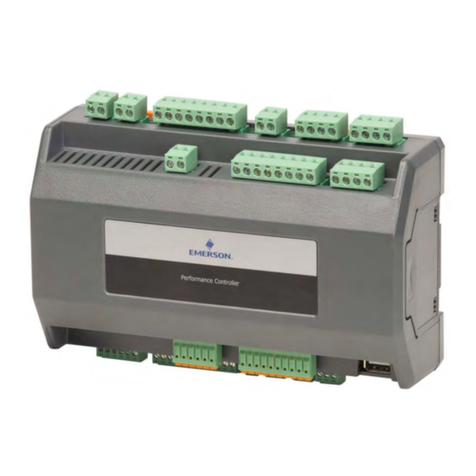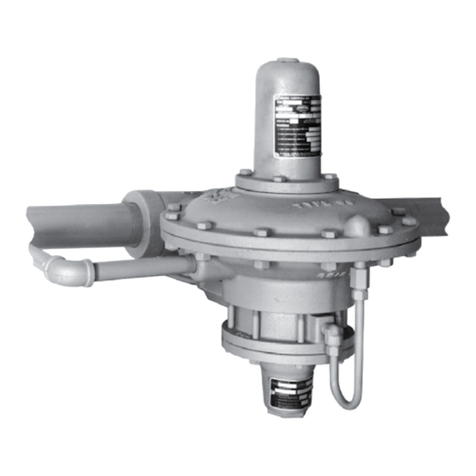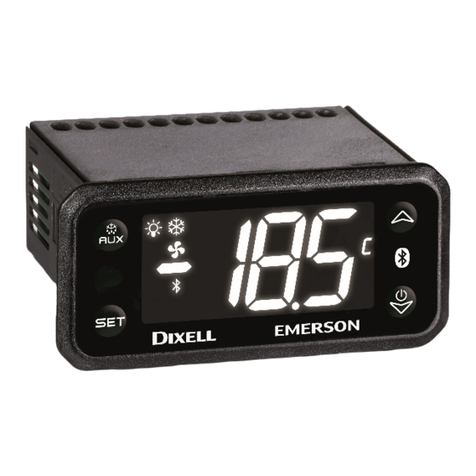
Instruction Manual
D104304X012
ATI Piston Actuator
June 2023
3
Maximum Pressure Limitations
The piston of the ATI actuator is pressure operated. This air pressure provides energy to compress the spring, to stroke
the actuator, and move the piston away from or towards the valve. The following explanations describe the maximum
pressure limits for an actuator. Refer to table 1 for maximum values.
WARNING
To avoid personal injury or parts damage, do not exceed the Maximum Pressures listed in table 1.
Exceeding any of the maximum pressures can result in uncontrolled movement of parts, damage to actuator parts and the
control valve, and loss of control of the process. Use pressure‐limiting or pressure‐relieving devices to prevent casing
pressure from exceeding these limits.
D Maximum Casing Pressure for Actuator Sizing: This is considered the standard full operating pressure. A full stroke
of 4.0 inches of the valve is expected at this pressure. If a full stroke is not achieved, consult the troubleshooting
section of this manual.
D Maximum Casing Pressure: If the Maximum Casing Pressure is exceeded, damage to the actuator might result.
Principle of Operation
The ATI actuator positions the valve plug in response to varying pneumatic loading pressure on the actuator. For the
SRE actuator, the actuator stem moves up as the loading pressure is increased on the bottom of the piston. As the
loading pressure is decreased, the spring forces the actuator stem down. For the SRR actuator, the actuator stem
moves down as the loading pressure is increased on the top of the piston. As the loading pressure is decreased, the
spring forces the actuator stem up.
The piston actuator has been selected to meet the requirement of the application and, in service, the actuator will
produce full travel of the valve with the piston pressure as indicated on the nameplate.
Lifting Guidelines
WARNING
Failure to follow these lifting guidelines and accepted lifting and rigging practices could result in property damage and
personal injury or death.
All lifting and rigging must be completed in accordance with federal/national/provincial, state and local regulations and
applicable lifting and rigging equipment standards. Only personnel trained in proper lifting and rigging practices shall
perform valve/actuator assembly lifting, rigging and installation. Because each lift will be unique, the method of lifting the
valve assembly, the correct location for attaching and lifting the valve assembly, and what the valve assembly will do when
lifted shall be considered for each lift.
Lifting and rigging equipment used to lift, install or remove a valve assembly or component must be properly selected and
sized for the weight and configuration of the valve assembly or component being lifted. The weight of the complete valve
assembly, including attached accessories, must be taken in consideration for this purpose. The lifting and rigging
equipment must be properly maintained and inspected for damage before each use.
If the valve is supplied with an actuator or handwheel, do not use the actuator or handwheel to lift the complete valve
assembly. Lifting lugs attached to the actuator must not be used to lift the complete valve assembly unless clearly marked
as being rated to support the complete valve assembly weight.
Lifting lugs or other lifting equipment attached to the valve or actuator must never be used to lift or support the weight of
attached piping.
